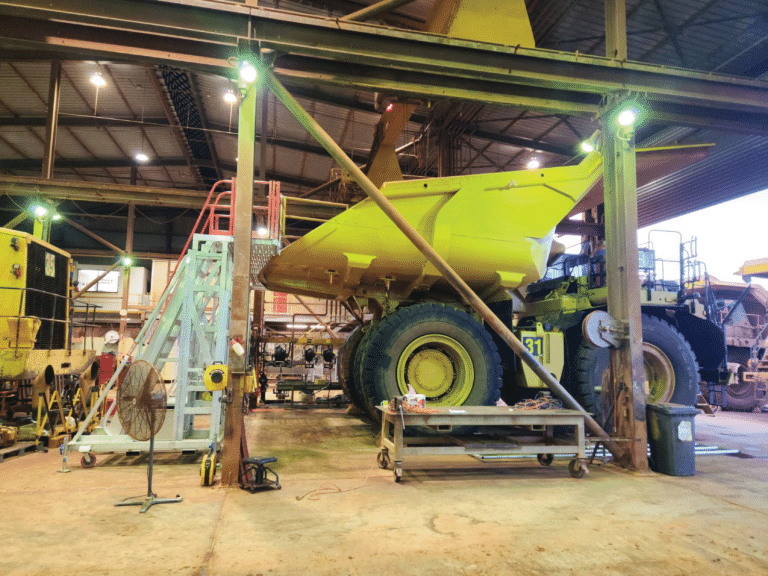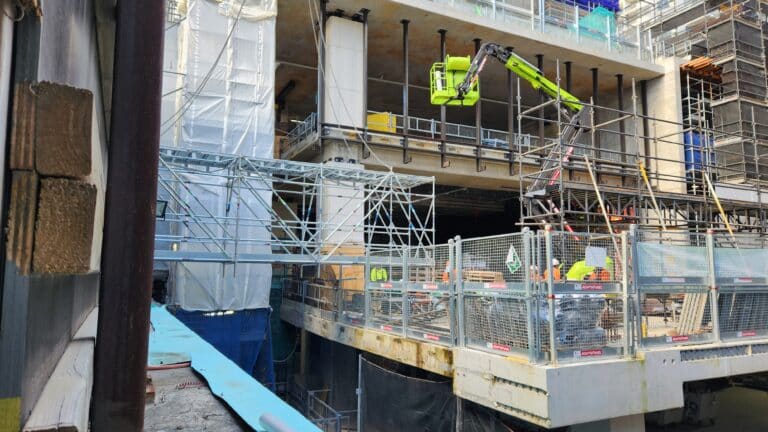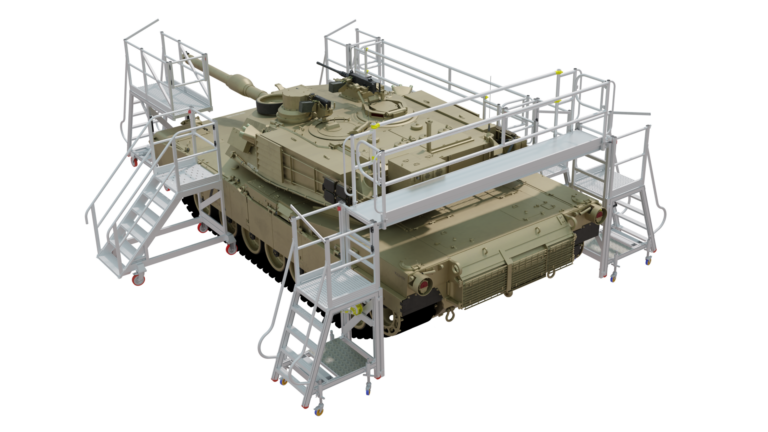Construction sites require safe and efficient access and egress points for workers and materials. Portable stairs offer a solution for temporary access points that can be easily moved and adjusted as needed. This article discusses the advantages of using portable stairs on construction sites. It also provides instructions on how to make them and emphasises the importance of following Australian Safety Standards.
Ensuring Portable Stair Compliance with Safety Standards
Portable stairs for construction must comply with the Australian Building Code and Australian Standards 1657 (2018) Fixed platforms, walkways, stairways and ladders – Design, construction and installation. Here are some key requirements:
- A single flight should have a minimum of two risers and a maximum of 18 risers.
- Adjacent flights should be connected by a landing.
- Stairway landings should not be less than the width of the stairway.
- A standing space of at least 600 mm that is clear from cross-traffic and a door swing or any other structure must be provided.
- The angle of stairways should be between 20 and 45 degrees to the horizontal tread.
- It is recommended the angle be between 30 and 38 degrees.
You can read more about this information at Worksafe Queensland.
Angle of Stairs
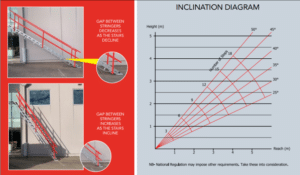
Portable stairs should have an angle between 30 and 38 degrees for optimal safety and comfort. This range ensures that users can ascend and descend the stairs with ease, reducing the risk of accidents. Additionally, it allows for a balanced ratio between riser height and tread depth, ensuring stability and usability. Steeper stairs can be challenging for some people to navigate, especially when carrying heavy objects or during adverse weather conditions.
However, the ability of some advanced portable stairs to adjust and range from 25 to 50 degrees offers a distinct advantage. This flexibility caters to a broader range of scenarios and user preferences, allowing for customisation based on specific needs and environments. Whether it’s accommodating a unique architectural design or ensuring accessibility for a diverse group of users, this adjustable angle feature proves invaluable in enhancing the functionality and adaptability of portable stairs.
Flights and Landings
Flights and landings are also important considerations when building portable stairs for construction. Each flight, the set of steps between landings, should have a minimum of two risers and a maximum of 18 risers to ensure usability and safety. Adjacent flights should be connected by landings, which serve as resting points and facilitate safe transitions.
The width of stairway landings should not be less than the width of the stairway itself. This ensures sufficient space for users to navigate comfortably during the transition between flights, promoting stability and preventing congestion.
Moreover, stairway landings must provide a standing space of at least 600mm that remains clear from cross-traffic, door swings, or any other structures. This standing space allows users to pause, reposition, or manage their belongings without obstructing others’ movement, thereby enhancing convenience and safety. By adhering to these guidelines, portable stairs can be designed to be safe, functional, and user-friendly for construction sites and temporary environments.
Portable/Temporary Stairs vs. Alternatives: A Comparative Analysis
When it comes to accessing elevated areas, whether in construction sites, events, or temporary setups, the choice of equipment is crucial. Two popular options often considered are portable/temporary stairs and their alternatives, which include ladders, ramps, and scaffoldings. In this section, we’ll delve into a comparative analysis, highlighting the advantages of portable/temporary stairs over their counterparts.
1. Safety:
- Portable/Temporary Stairs: Designed with safety in mind, these stairs often come with non-slip surfaces, safety guardrails, and a stable base. The angle of these stairs, typically between 30 and 38 degrees, ensures easy ascent and descent, minimising the risk of accidents.
- Alternatives: Ladders, especially when used on uneven surfaces, can be unstable. Ramps, on the other hand, can become slippery in adverse weather conditions, and scaffoldings require meticulous setup to ensure safety.
2. Flexibility and Adaptability:
- Portable/Temporary Stairs: One of the standout features of portable stairs is their adaptability. They can be adjusted to fit various heights and can be easily relocated as needed. This flexibility is especially beneficial in dynamic environments where requirements change frequently.
- Alternatives: Ladders come in fixed sizes, and adjusting them to specific heights can be challenging. Scaffoldings, while adjustable, and are cumbersome to relocate.
3. Setup and Dismantling:
- Portable/Temporary Stairs: These stairs are designed for quick setup and dismantling, making them ideal for temporary setups or events where time is of the essence.
- Alternatives: Setting up scaffoldings can be time-consuming and require skilled labour. Similarly, ensuring ladders are stable and safe can take time.
4. Space Efficiency:
- Portable/Temporary Stairs: Compact and designed for space efficiency, portable stairs occupy minimal ground space, making them suitable for areas with space constraints.
- Alternatives: Scaffoldings, in particular, can occupy a significant amount of ground space, which might not be ideal for tight spaces or crowded events.
5. Cost-Effectiveness:
- Portable/Temporary Stairs: Given their durability and minimal maintenance requirements, portable stairs often offer better long-term value. Their versatility means they can be used across various scenarios, ensuring a return on investment.
- Alternatives: While ladders might be cheaper initially, their limited functionality can necessitate additional equipment purchases. Scaffoldings, on the other hand, can be expensive to set up and maintain.
While alternatives like ladders, ramps, and scaffoldings have their place in specific scenarios, portable/temporary stairs emerge as a versatile, safe, and cost-effective solution for a wide range of applications. Their blend of safety features, adaptability, and ease of use makes them a preferred choice for businesses and event organisers alike.
A Safer & Efficient Means of Access & Egress
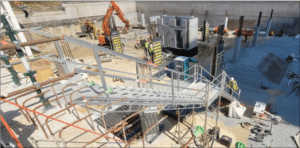
Portable stairs for construction offer a safer, faster, and more efficient means of access and egress for workers and materials. They can easily be moved and adjusted as needed, making them a versatile solution for temporary access points. Additionally, portable stairs can be combined with other access solutions, such as extension ladders, access platform ladders, and adjustable work platforms, to create a comprehensive access system for construction sites.
In conclusion, portable stairs for construction offer many advantages, including safety, versatility, and efficiency. By following the Australian Safety Standards and guidelines for building portable stairs, construction professionals can ensure a safe and effective access solution for their sites.
